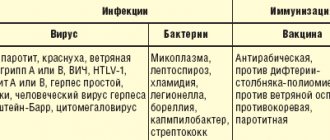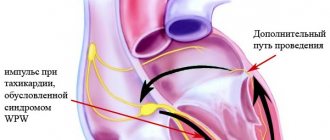Chronic fatigue syndrome is a unique disease characterized by extreme fatigue that cannot be explained by any underlying medical condition. Fatigue may worsen after exercise or intense mental activity, but does not improve with rest.
The exact genesis of CFS is unknown, although many theories have been developed to explain the development of this syndrome, both in connection with the effects of viral infections and certain effects of psychological stress. Some medical experts believe CFS (chronic fatigue syndrome) can be triggered by a number of factors.
Unfortunately, at this time there is not a single objective method that can reliably confirm the diagnosis of chronic fatigue syndrome. But the patient may need various medical examinations in order to differentiate similar symptoms in other diseases. The main goal of treating chronic fatigue syndrome is to alleviate symptoms.
Definition
Chronic Fatigue Syndrome (CFS) or Myalgic Encephalomyelitis is a serious disease, a complex, long-lasting disorder that can affect many systems in the body. It is characterized by constant fatigue, which does not go away with rest and complicates the implementation of normal activities to the point that the patient is unable to get out of bed. Also sometimes called Systemic Activity Intolerance Disease. Since 1984, the concept of Central Sensitivity Syndromes has been proposed to understand the pathological process, which includes several processes with similar characteristics, among which are CFS and fibromyalgia.
Picture 1
Our doctors
Pankov Alexander Rostislavovich
Neurologist
40 years of experience
Make an appointment
Novikova Larisa Vaganovna
Neuropathologist, Candidate of Medical Sciences, doctor of the highest category
Experience 39 years
Make an appointment
Belikov Alexander Valerievich
Neurologist, Candidate of Medical Sciences
21 years of experience
Make an appointment
Symptoms
Chronic Fatigue Syndrome is characterized by a clinical picture that includes some of the following symptoms: severe fatigue or extreme exhaustion that lasts more than a day after physical effort, fatigue or poor health after physical activity with worsening symptoms, joint and muscle pain for no apparent reason, headaches pain, decreased memory and concentration, insomnia, lack of feeling of rest after a full night's sleep, dizziness, sore throat, slight swelling or pain in the lymph nodes.
Sleep disorders
One of the most obvious causes of increased fatigue is chronic lack of sleep. During sleep, hormones are released that regulate metabolism and energy levels, and toxic metabolic products that accumulate during activity are removed. The metabolic rate is significantly reduced, which allows for recovery processes10.
According to modern recommendations, the optimal duration of night sleep for adults should be an average of seven hours. In this case, sleep should be calm and uninterrupted. Taking a short nap during the day can also help boost your energy levels during the day. Studies have proven that a set sleep schedule with a clear time frame for falling asleep and rest duration can reduce fatigue and eliminate sleep problems10.
At the same time, prolonged sleep during daylight hours contributes to disruption of circadian rhythms and disruption of the biological clock. This is another common cause of chronic fatigue. Disturbances in circadian rhythms are also associated with jet lag, night shift work, regular lack of sleep, the habit of falling asleep with a light source, and other factors10.
Diagnostics
Until now, diagnosis was carried out by exclusion, after numerous tests and tests, the presence of other pathologies with similar symptoms. To complete the diagnosis by exclusion, the fatigue must have lasted for more than 6 months and be associated with at least 4 of the above symptoms. There are several criteria for determining the presence of chronic fatigue syndrome: Fukuda criterion 1994, Canadian Consensus Criteria (CCC) 2003 and Myalgic Encephalomyelitis-International Consensus Criteria (ME-ICC) 2011. According to Nakatomi I. 2021, positron emission tomography (PET) was found the presence of extensive neuro-inflammation of brain regions in patients with chronic fatigue syndrome, which is associated with the intensity of their neuropsychological symptoms. The Filum System® method, based on scientific discoveries in the field of fibromyalgia, which belongs to the same group as chronic fatigue syndrome, and based on observations of several cases with a concomitant diagnosis of filum terminale disease, offers MRI of the brain and spine. MRI can detect the possible presence of signs of spinal cord tension. In addition, a PET scan of the brain is recommended.
Currently, the causes of chronic fatigue syndrome are not fully understood. As for research into the causes, experts believe that an innate tendency to the disorder can trigger the development of the syndrome in combination with certain factors. Possible factors currently being investigated are:
- Viral infections: Several cases of the syndrome developing after a viral infection have been found.
- Problems or changes in the immune system: Problems in the immune system have been observed in patients with chronic fatigue syndrome.
- Hormonal disorders.
– According to the Filum System® method:
Due to recent discoveries in fibromyalgia: the possible predisposition of patients with spinal cord tension due to excessive tension of the filum terminale, we advise you to keep in mind the possible tension of the spinal cord in patients with chronic fatigue syndrome, since this pathology is included in the same group with fibromyalgia.
Chronic fatigue syndrome and immune dysfunction
Chronic fatigue syndrome (CFS) is a post-infectious (ARVI) chronic disease, the main manifestation of which is unmotivated, severe general weakness, which takes a person out of active everyday life for a long time. Previously, this disease was defined as myalgic encephalomyelitis [5], chronic Epstein-Barr viral infection, etc., and even earlier (in 1869) as “neurasthenia” and “neurocirculatory asthenia” [2]. For a long time, the interpretation of this disease was controversial.
In the United States of America, an outbreak of the disease was first noted in 1984 in the small town of Incline Village, Nevada, by doctors P. Cheney and D. Peterson. At that time, the authors considered the Epstein-Barr virus to be the root cause of the epidemic, since the majority of patients had antibodies to the specified virus in their blood. Further research revealed antibodies to other viruses. The nature of the epidemic and the discovery of antiviral antibodies allowed the authors to define their theory of the occurrence of CFS as viral.
Thanks to the efforts of researchers from many countries around the world - Great Britain, Australia, Germany and, first of all, the USA, by 1988 the main diagnostic criteria for chronic fatigue syndrome were formulated [3]. Since the main targets of the disease are the central nervous system and the immune system, the name of the disease has changed to “chronic fatigue and immune dysfunction syndrome”, which more fully reflects the pathophysiological basis of the disease and emphasizes the difference between CFS and the natural illness of patients after acute and chronic illnesses or injuries. The syndrome is not limited to any geographic or sociodemographic groups. According to various authors, the incidence of CFS can range from 10 to 37 cases per 100 thousand population.
The criteria published in 1988, 1991, 1992 and 1994 are used to diagnose CFS. Center for Disease Control (USA), which include a set of large, small and objective criteria. The main diagnostic criteria are: 1) persistent fatigue and decreased performance (by at least 50%) in previously healthy people over the past six months; 2) exclusion of other causes or diseases that can cause chronic fatigue.
The minor symptomatic criteria of the disease include the following. The disease begins suddenly, as with the flu, with 1) an increase in temperature to 38°C; 2) sore throat, sore throat; 3) slight enlargement (up to 0.3 - 0.5 cm) and tenderness of the cervical, occipital and axillary lymph nodes; 4) unexplained generalized muscle weakness; 5) soreness of individual muscle groups (myalgia); 6) migrating joint pain (arthralgia); 7) periodic headaches; rapid physical fatigue followed by prolonged (more than 24 hours) fatigue; 9) sleep disorders (hypo- or hypersomnia); 10) neuropsychological disorders (photophobia, memory loss, increased irritability, confusion, decreased intelligence, inability to concentrate, depression); 11) rapid development (within hours or days) of the entire symptom complex.
The disease begins suddenly, as with the flu, with 1) an increase in temperature to 38°C; 2) sore throat, sore throat; 3) slight enlargement (up to 0.3 - 0.5 cm) and tenderness of the cervical, occipital and axillary lymph nodes; 4) unexplained generalized muscle weakness; 5) soreness of individual muscle groups (myalgia); 6) migrating joint pain (arthralgia); 7) periodic headaches; rapid physical fatigue followed by prolonged (more than 24 hours) fatigue; 9) sleep disorders (hypo- or hypersomnia); 10) neuropsychological disorders (photophobia, memory loss, increased irritability, confusion, decreased intelligence, inability to concentrate, depression); 11) rapid development (within hours or days) of the entire symptom complex.
Objective (physical) criteria are: 1) low-grade fever; 2) non-exudative pharyngitis; 3) palpable cervical or axillary lymph nodes (less than 2 cm in diameter). The diagnosis of CFS is established by the presence of 1 and 2 major criteria, as well as minor symptomatic criteria: 6 (or more) of 11 symptomatic criteria and 2 (or more) of 3 physical criteria; or 8 (or more) of 11 symptom criteria.
People of any age are susceptible to the disease, but it has been noted that women aged 25–49 years are affected more often than men. In some cases, the disease develops 2 years after the first attack. In most patients, chronic fatigue and other accompanying symptoms, having begun during the period of a flu-like illness, decrease somewhat after one or two weeks, but recovery does not occur. In the most severe cases, severe depression may begin, loss of concentration and severe physical weakness occur. Cases of spontaneous recovery have been described. However, most patients continue to suffer from cyclical diseases for many months or years.
When making a diagnosis of CFS, guided by the main criteria, you should pay special attention to the peculiarities of the course of this disease in each specific case. According to many researchers, with CFS there may be disorders of the gastrointestinal tract, kidneys, liver and heart, allergies and increased sensitivity to odors, medications, alcohol occur, sudden weight loss is observed without breaking the diet, sweating at night, photophobia, hair loss hair and more etc.
To correctly diagnose CFS, differential diagnosis is necessary with diseases of the endocrine system, rheumatic diseases, neurological diseases, hematological diseases, chronic systemic diseases, poisoning with heavy metals, drugs, alcohol and the effects of radiation. In addition, differential diagnosis should be carried out with a disease such as fibromyalgia (FM), in which chronic and multiple muscle pain, fatigue, sleep disorders and other symptoms similar to CFS are observed (Table 1).
Table 1. Comparison of the severity of characteristic signs in CFS and FM
| Sign | CFS | FM |
| Sudden onset | +++ | + |
| Significant weakness | +++ | ++ |
| Painful lymph nodes | +++ | – |
| Fever | +++ | – |
| Morning tension | ++ | +++ |
| Sleep disorders | ++ | +++ |
| Pharyngitis | ++ | + |
| Headache | +++ | ++ |
| Anxiety | ++ | + |
| Immune dysfunction | +++ | + |
| Neurohormonal dysfunction | +++ | +++ |
Speaking about the etiology and pathogenesis of the disease and the role of the immune system, it should be noted that there are several theories. According to Professor J. Goldstein, director of the Institute of Chronic Fatigue Syndrome (California, USA), the disease is caused by an as yet unidentified virus. This may be one of the herpes viruses (Epstein-Barr /EBV/, cytomegalovirus /CMV/, herpes virus types 1 and 2 /HHV-1, 2/, herpes virus type 6 /HHV-6/), Coxsackie A viruses or B, enteroviruses, etc., which is confirmed by a number of researchers [5]. J. Goldstein defines CFS as a multicausal disorder of neuroimmune mechanisms, which manifests itself in genetically predisposed individuals as a result of activation of the immune system by infectious agents and dysregulation of the central nervous system, mainly its temporo-limbic region. The limbic system not only takes part in regulating the activity of autonomic functions, but largely determines the “profile” of an individual, his general emotional and behavioral background, performance and memory, ensuring a close functional relationship between the somatic and autonomic nervous systems. A latent infection can lead to illness (i.e., turn on) when exposed to a number of possible stimuli: severe emotional stress, adverse environmental factors, intoxication, trauma, surgery, pregnancy, childbirth, etc. One of the possible ways of developing immune dysfunction in patients with CFS and multiple allergies is shown in the diagram.
Another theory assigns a major role to neuropsychiatric factors with a predominance of immunodysregulation. Neuropsychological disorders are recognized as one of the diagnostic criteria for CFS. G. Taerk et al. noted a significant increase in the frequency of depression among patients with CFS compared to the control group. Using generally accepted diagnostic methods, severe depression was detected in 16 out of 24 patients. In addition, 50% of patients with chronic fatigue had at least one episode of depression before the onset of CFS. I. Hickie et al found depression in 46% of patients with CFS. In 12% of them, episodes of depression preceded the onset of CFS. Scientists believe that depression, as a premorbid condition, occurs more often in patients with CFS than in control groups. This suggests a psychological predisposition to CFS.
The role of depression in the development of CFS is difficult to assess, since many somatic signs of primary depression coincide with those of CFS. Therefore, the physician must decide on a case-by-case basis whether a mental disorder is a cause or a component of CFS. It should be noted that some immunological changes have been described in depressed patients; they were mainly characterized by a decrease in cellular immunological parameters. Therefore, it can be assumed that, at least partially, immunological changes in CFS may be due to concomitant depression.
At the same time, according to a group of leading CFS researchers from the University of Washington, depression and other psychological problems associated with chronic fatigue are a result of this fatigue or immunological and psychological dysfunctions that occur independently.
Numerous data indicate that both quantitative and functional immunological abnormalities are observed in CFS [1, 6]. There are a large number of “triggers” that cause immunological reactions that involve different types of blood cells and small molecules such as interferon and interleukin. It can be assumed that in patients with CFS these mechanisms are impaired [7].
Currently, there are no laboratory tests that would clearly indicate the presence or absence of CFS in a patient [6]. Moreover, data provided by various researchers indicate the possibility of changing many indicators both upward and downward. For example, according to some sources [4, 7], 20% of patients with CFS have leukocytosis and the same number have leukopenia. Relative lymphocytosis is observed on average in 22% of cases (from 0% to 71% according to various sources) [6]. Australian researchers, on the contrary, found lymphopenia in 28% of patients. There is evidence that 30% of patients have atypical lymphocytes and in 48% of cases monocytosis is observed [6]. According to studies [7], on average, 31% of patients had a decrease in the level of serum immunoglobulins of classes A, D, G and M. IgD deficiency, mainly of subclasses G1 or G3, was present in 45% of the observed patients [8]. According to other materials, the level of immunoglobulins is increased in 28% of patients with CFS [7]. On average, 53% of patients had low levels of circulating immune complexes, while only 25% had reduced complement activity [6].
The manifestation of immune system dysfunction in patients with CFS was also expressed in a decrease in the cytological activity of natural killer cells; increased levels of interleukins 1-alpha, 2 and 6; reduction in the increased content of alpha-interferon and other cytokines in mitogen-stimulated lymphocytes; changes in the number and function of T- and B-lymphocytes [6].
| Immune dysfunction in patients with CFS |
It has been noted that in most patients with CFS, the disease is accompanied by allergic manifestations, including an increased skin reaction to a number of allergens and an increase in the level of circulating IgE. The mechanisms of this allergy have not yet been identified.
Serological tests usually do not reveal significant abnormalities. There is evidence of the presence of antinuclear antibodies and rheumatoid factor in low concentrations, but without clinical manifestations of systemic lupus or rheumatoid arthritis. Increases in cryoglobulins and cold agglutinins were found in a small number (8%) of patients.
The issue remains controversial regarding the detection of specific antiviral antibodies (HHV-6, EBV, CMV, Coxsackie, Herpes simplex). They are expected to be reactivated in patients with CFS. Enteroviruses can also serve as an etiological factor. Proponents of the viral etiology of the disease insist on a latent virus or viruses that are activated under certain conditions. One thing is clear that they have neuro- and immunotropic properties, since in CFS the central nervous system and the immune system are affected. Thus, changes in laboratory parameters in CFS are varied, sometimes contradictory, and often insignificant in degree. Despite this, there is no doubt that the functional state of the immune system has changed.
When diagnosing chronic fatigue syndrome and immune dysfunction on the basis of medical data and one’s own analysis, in addition to certain clinical and objective criteria, it is necessary to take into account a number of immunological indicators that are undoubtedly of important diagnostic value. They are summarized in table. 2.
Table 2. Immunological parameters for assessing CFS
| Options | Reduced | Norm | Promoted |
| 1. T helper cells | + | ||
| 2. T-suppressors | + | ||
| 3. TX/TS | + | ||
| 4. HLADR/CD8 (activated TC) | + | ||
| 5. CD38/CD8 (activated TC) | + | ||
| 6. CD3/CD56 (NK cells) | + | ||
| 7. CD56 (NK cells) | + | ||
| 8. Interleukin-2 receptor | + | ||
| 9. NK cell activity | + | ||
| 10. Mitogenic response of lymphocytes | + | ||
| 11. Humoral immunity | + | ||
| 12. Secretory IgA in saliva | + | ||
| 13. Immune complexes | + | ||
| 14. Tissue and protein antibodies | + | ||
| 15. Viral antibodies | + | ||
| 16. Fungal antibodies | + |
Attention should be paid to the fact that a number of changes in immunological parameters, namely a decrease in the functional activity of natural killer cells and macrophages, a decrease in the response of lymphocytes to mitogens and activation of CD+ lymphocytes, are common to CFS and various viral infections. That is why currently the most popular theory of the development of CFS considers the disease as a multicausal disorder of neuroimmune interaction, manifested in genetically predisposed individuals, probably under the influence of infectious agents (possibly viral in nature), leading to activation or imbalance of the immune system and dysregulation of the central nervous system. Since symptoms vary and may change with the use of neuropharmacological drugs, they may be mediated by neuroimmune transmitters. If we consider the neuroimmune system as a network (of interactions), it becomes clear that its work can be disrupted by factors affecting various parts of the system. Based on this, it would be logical to predict the success of treatment of CFS with psychotropic, immunomodulatory and anti-infective drugs.
Taking into account the latest data from foreign doctors, we can conclude that there is no specific treatment.
Certain treatment tactics have been developed that make it possible to prolong the remission of the disease and return patients to work [6]. Small doses of H2-blockers, tricyclic antidepressants and serotonin reuptake inhibitors (fluoxetine-Prozac) are used, which increase the patient’s energy capabilities, correct sleep, and reduce muscle soreness and tension. Symptomatic treatment is used, as well as vitamin therapy and physiotherapy. In each case, an individual approach is recommended. After leaving the hospital, patients remain in contact with their attending physicians, continuing to comply with a certain regimen and prescriptions [6]. The prognosis is favorable in most cases. Patients generally recover within 2 to 4 years, but full recovery of physical activity does not occur. Approximately 20% of patients experience a progressive increase in symptoms. Literature
1. Artsimovich NG //Theses of Symposium with International Participation Current Problems of Clinical and Experimental Psychoneuroimmunology. Tomsk, Russia, 1992. Vol. 1. P. 80 - 82. 2. Beard DS //Boston Medical and Suxgical J. 1869. Vol. 3. P. 217 - 220. 3. Bell DS, Bell KM //Ann. Intern. Med. — 1988. Vol. 109. No. 2. P. 167. 4. Bell DS //The CFIDS Chronicle. J. CFIDS Assoc. 1992. P. 2 - 5. 5. Bell EJ, McCarthey RA Riding MH//JR Soc. Med. 1988. Vol. 81. P. 329 - 331. 6. Buchwald D. //Post-viral Fatigue Syndrom. Edited by R. Jenkins and J. Mowbray. 1991. P. 117 - 136. 7. Buchwald D., Komaroff AL //Rev. Infect. Dis/ 1991 Vil. 13. Suppl 1. P. 12 - 18. 8. Buchwald D., Cheney PR, Peterson DL, et al.//Annals Inter. Med. 1992. Vol. 116. No. 2. P. 103 - 113. 9. Calabrese L., Danoa Th., Camera E., Wilke W. // The CFIDS Chrinicle. J. CFIDS Assoc. 1992. P. 6 - 12.
Risk factors
The main factors contributing to the development of chronic fatigue syndrome:
- Age The syndrome can appear at any age, but the frequency of its manifestations is observed to increase between 40 and 50 years.
- Female gender: Women are diagnosed more often than men, but since this is a disease that has only recently been classified, it is not yet confirmed whether this is due to the fact that women are more likely to talk about their symptoms.
- Stress: It has been confirmed that physical or emotional stress can be a development factor for chronic fatigue syndrome.
- Genetic Factors/Heredity: Members of the same family sometimes suffer from this syndrome, so research is underway into the role of genetics in its development.
The Fílum System® method also takes into account the possible connection between chronic fatigue syndrome and tension in the spinal cord, which is caused by an over-tight filum terminale. Filum terminale disease is a genetic pathology that is inherited.
Unbalanced diet
A number of studies have found that consuming excess amounts of simple carbohydrates can make you feel tired during the day. This is due to the ability of these nutrients to quickly increase blood glucose levels, which in turn leads to the immediate production of large amounts of insulin, which removes sugar from the blood into the cells. A sharp increase and subsequent equally sharp decrease in sugar levels causes a feeling of fatigue4.
Another reason for increased fatigue is a low-calorie diet. When there is a negative balance between calories in food and energy expenditure, metabolism slows down, which can be associated with a feeling of fatigue. To prevent a slow metabolism, most people need to consume at least 1,200 calories per day5.
It is important to consume enough protein, which increases your metabolic rate more than carbohydrates and fats5. In addition, research shows that fatigue is reduced by increasing the content of branched-chain amino acids, which are the building blocks of protein. Therefore, to keep your metabolism high enough to prevent fatigue, you should consume protein at every meal6.
Complications
The main complications that can occur with chronic fatigue syndrome:
- Depression: Extreme fatigue and general fatigue, along with other symptoms, especially chronic pain, which greatly affects patients, can trigger depression.
- Social isolation: Due to difficulty maintaining normal activity due to poor health and the restrictions that chronic fatigue imposes on the patient's life, they often find themselves isolated.
- Deterioration in quality of life: with the development of the disease, there is a decrease in the previous quality of life in patients.
I am depressed!
This can often be heard from friends or read on the forum. But, as a rule, the person who makes such statements is mistaken. After all, what is meant by “depression” in a colloquial environment? Usually this simply means a short-term deterioration in mood, irritability, fatigue under the influence of circumstances. Sometimes a person is just having a “bad day” or “got off on the wrong foot” and they call it depression.
Nowadays, people are constantly faced with stress: overload at work, a frantic pace of life, inflated demands on themselves, a huge amount of information that flows from all sources. It is not surprising that many people cannot cope with so many stressors, and this can manifest itself in various symptoms:
- anxiety;
- irritability;
- fatigue;
- sleep disorders;
- obsessive thoughts;
- panic attacks.
If these symptoms are short-lived and go away on their own, do not be too upset. In most cases, just a good rest will help defeat them. But sometimes a vacation is not enough, and the body needs a little help. It is very important to choose the right medications for this.
Treatment
There is no single recognized treatment for Chronic Fatigue Syndrome/Myalgic Encephalomyelitis. Currently, the most effective treatments are aimed at alleviating and relieving symptoms:
- Cognitive gymnastics
- Gradual physical activity
- A strategy of consistent routine, relaxation, and technique to improve sleep quality
- Sleep treatment
- Pain treatment
- Balanced diet
In our specialty, neurosurgery, since the publication of a study conducted by Dr. Mantia and his colleagues in 2015, which looked at the use of the Filum System® method and concluded that patients who have undergone surgery show better results using physical therapy, provided that Since the presence of filum terminale disease is confirmed, we believe that some patients with fibromyalgia syndrome may be caused by filum terminale disease. It is still unknown whether this can be attributed to the entire subgroup of central sensitivity syndrome or whether it depends on specific diagnoses, but in several cases diagnosed with chronic fatigue syndrome, the presence of abnormal tension in the nervous system has been noted. For this reason, research is currently underway and we advise checking whether patients with chronic fatigue syndrome have signs of filum terminale disease for neurosurgical treatment. Since 1993, with the publication of the doctoral dissertation of Dr. Royo Salvador, who linked the tension of the entire nervous system with the filum terminale as the cause of several diseases, a new treatment method that is etiological, that is, acting on the cause of the development of the disease. With surgical cutting of the filum terminale using the Filum System® method, the tension force responsible for this pathological mechanism is eliminated. Our dissection technique is minimally invasive, indicated in all cases of filum terminale disease and is recommended to be used as early as possible because it stops further development of the disease with minimal risks.
What to do?
There are a number of drugs that are sold without a prescription. They are not effective for clinical depression, but they will help cope with stress, short-term sleep disorders and irritability. With their help, you can try to ease your psycho-emotional state a little:
- Glycine is one of the most popular remedies. Prescribed starting from childhood, for stress, fatigue, emotional overstrain. Sometimes effective for minor sleep disorders.
- Afobazol . It has an anti-anxiety effect, eliminates feelings of fear, tearfulness, and irritability. It is used in the treatment of vegetative-vascular dystonia and even in alcoholism, to alleviate the symptoms of alcohol withdrawal. Not addictive. Please note that it is contraindicated for children under 18 years of age.
- Novo-passit . Quite a strong sedative for nervousness and irritability. Effective in reducing concentration, memory, and fatigue. Helps restore the nervous system during periods of increased stress.
Over-the-counter medications will not cope with clinical depression, but they can alleviate the psycho-emotional state.
- Stressitis . Well calms, relieves irritability, anxiety, improves sleep. During the treatment period, driving and other activities that require increased concentration are not recommended.
- Persen is a herbal medicine. Contains extracts of valerian, lemon balm and peppermint. Has a calming and anti-anxiety effect. It helps well with increased excitability, emotional lability, and tearfulness. Can be used in the complex treatment of mild anxiety and depressive disorders, facilitating the withdrawal of potent drugs.
- Magne B6 . Increases the body's resistance to stress. Magnesium deficiency can lead to an imbalance in the nervous system, irritability, and sleep disturbances, so Magne B6 has a positive effect in these cases.
- Tenoten . It has an anti-anxiety, calming, anti-asthenic effect, helps cope with stress and psycho-emotional stress. Relieves irritability and tension. Can be used for neurotic conditions.
Dissection of the filum terminale using the Filum Sistem® method
Advantages
1. The tension on the spinal cord caused by a too short or tight filum terminale is eliminated.
2. Using the minimally invasive surgical technique of the Chiari Institute of Barcelona, the surgical time is 45 minutes. Stay in the hospital for about a day. The post-operative period is short and without serious restrictions. No admission to the intensive care unit. No blood transfusion.
3. Its use reduces the risk of mortality to zero. No serious complications.
4. Improves symptoms and stops the development of pathologies associated with filum terminale disease.
results
More than 1,500 patients with Filum Terminale Disease and Neuro-Craniovertebral Syndrome have been operated on using the Filum System® method. This method eliminates the cause of the mechanical conflict of the nervous system, stopping the further development of the disease, with excellent results and a high rate of patient satisfaction. Most patients with fibromyalgia who undergo Filum Sistem® surgery and physical therapy experience significant improvement compared to those patients who receive physical therapy alone. In several cases, patients were also diagnosed with chronic fatigue syndrome in addition to being diagnosed with filum terminale disease and/or fibromyalgia.
Prognosis and prevention
Chronic fatigue syndrome must be treated promptly. In patients who do not consult doctors, symptoms worsen, immune defenses are destroyed, and multiple somatic diseases appear.
If the causes of CFS are eliminated, comprehensive treatment is carried out, and all medical recommendations are followed, then a complete cure occurs. For preventive purposes, it is recommended to lead an active lifestyle, do not get overwhelmed at work, go out into nature more often, eat well and relax in absolute silence.
It is important! Do not turn a blind eye to the alarming symptoms of CFS; be sure to make an appointment with neurologists at the CELT clinic for diagnosis, identification of the causes and treatment of the disease.
Make an appointment through the application or by calling +7 +7 We work every day:
- Monday—Friday: 8.00—20.00
- Saturday: 8.00–18.00
- Sunday is a day off
The nearest metro and MCC stations to the clinic:
- Highway of Enthusiasts or Perovo
- Partisan
- Enthusiast Highway
Driving directions
Bibliography:
- IACFS/ME: Primer for Clinical Practitioners. Members of the IACFS/ME Primer Writing Committee, Fred Friedberg, Ph.D., Chairperson Stony Brook, 2014, New York, USA.
- Yunus, M. B. (2007). Role of central sensitization in symptoms beyond muscle pain, and the evaluation of a patient with widespread pain. Best Practice & Research Clinical Rheumatology, 21(3), 481-497.
- Nakatomi Y, Mizuno K, Ishii A, Wada Y, Tanaka M, Tazawa S, Onoe K, Fukuda S, Kawabe J, Takahashi K, et al. J Neuroinflammation in Patients with Chronic Fatigue Syndrome/Myalgic Encephalomyelitis: An C-(R)-PK11195 PET Study. Nucl Med. 2014 Jun; 55(6): 945-50. Epub 2014 Mar 24.
- Dr. Miguel B. Royo Salvador (1996), Siringomielia , escoliosis y malformación de Arnold-Chiari idiopáticas, etiología común (PDF). REV NEUROL (Barc); 24 (132): 937-959.
- Dr. Miguel B. Royo Salvador (1996), Platibasia , impresión basilar, retroceso odontoideo y kinking del tronco cerebral, etiología común con la siringomielia , escoliosis y malformación de Arnold-Chiari idiopáticas (PDF). REV NEUROL (Barc); 24 (134): 1241-1250
- Dr. Miguel B. Royo Salvador (1997), Nuevo tratamiento quirúrgico para la siringomielia , la escoliosis , la malformación de Arnold-Chiari , el kinking del tronco cerebral, el retroceso odontoideo, la impresión basilar y la platibasia idiopáticas (PDF). REV NEUROL; 25 (140): 523-530
- M. B. Royo-Salvador, J. Solé-Llenas, J. M. Doménech, and R. González-Adrio, (2005) “Results of the section of the filum terminale in 20 patients with syringomyelia , scoliosis and Chiari malformation .” (PDF). Acta Neurochir (Wien) 147:515–523.
- M. B. Royo-Salvador (1992), “Aportación a la etiología de la siringomielia ,” Tesis doctoral (PDF). Universidad Autónoma de Barcelona.
- M. B. Royo-Salvador (2014), “Filum System® Bibliography” (PDF).
- M. B. Royo-Salvador (2014), “Filum System® Guía Breve.”
Filum terminale disease
After the research of Dr. Royo Salvador and his doctoral dissertation (1992), it was found that several diseases whose cause was previously unknown, such as: Arnold Chiari I syndrome, idiopathic Syringomyelia and Scoliosis, Platybasia, Basilar Impression, Axial vertebral tooth displacement, An angular bend at the level of the arch of the atlas is part of a new pathology - Diseases of the filum terminale - and arises for the same reason: tension in the spinal cord and the entire nervous system. The tension force of the entire nervous system during filum terminale disease is present during the formation of all human embryos; to a greater or lesser extent, everyone suffers from its consequences and various forms of manifestation and intensity. The following diseases may be associated with filum terminale disease: intervertebral hernias, some cerebrovascular insufficiency syndromes, facet syndrome, Bostrup syndrome, fibromyalgia, chronic fatigue, nocturnal enuresis, urinary incontinence and acute paraparesis. For accurate diagnosis, selection of treatment and monitoring of a patient with filum terminale disease, the Filum System® method was created.
What diseases cause weakness?
Increased fatigue accompanies various diseases and pathological conditions, including2,3:
- hormonal imbalance
- respiratory tract pathologies (chronic obstructive pulmonary disease, emphysema)
- cardiovascular diseases
- almost all blood diseases, including anemia
- chronic renal, liver failure
- mental illness (depression, particularly major depressive disorder)
- multiple sclerosis
- diabetes
- infectious diseases (ARVI, hepatitis, tuberculosis)
- fibromyalgia
- obesity
- sleep apnea
- powerful pain syndrome and many others
- malignant processes.
Increased fatigue can also be caused by taking certain medications, in particular chemotherapy, analgesics, and antidepressants.
Since asthenia is closely associated with many diseases, it is important to consult a doctor when it appears and find out the reasons.









